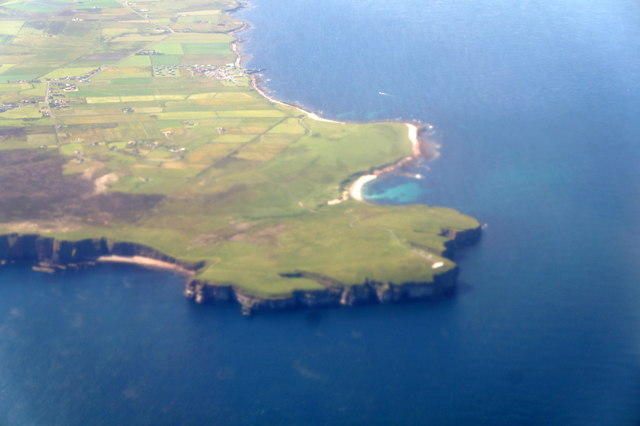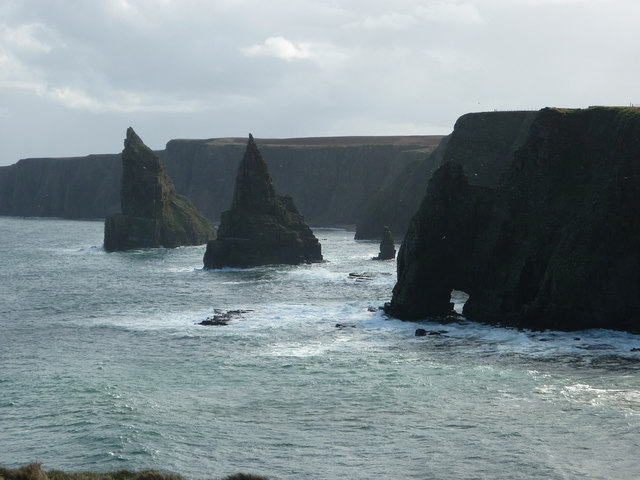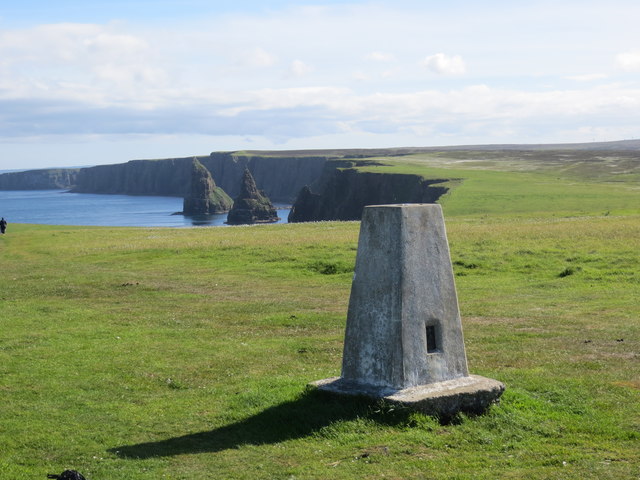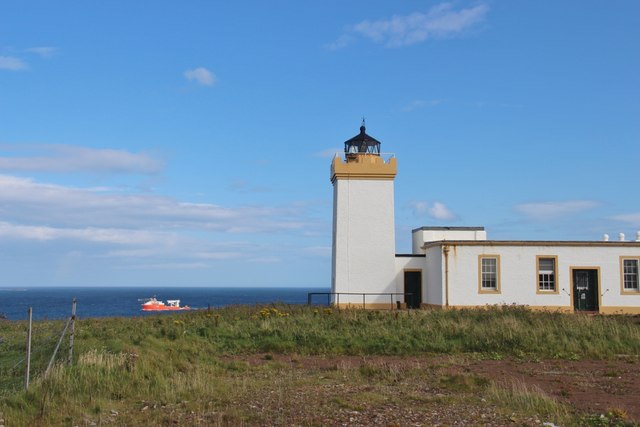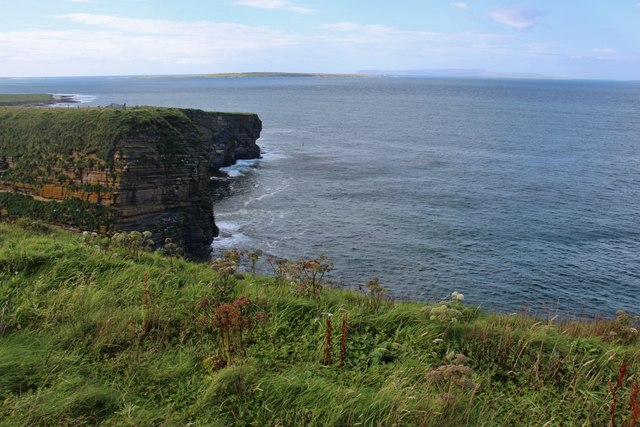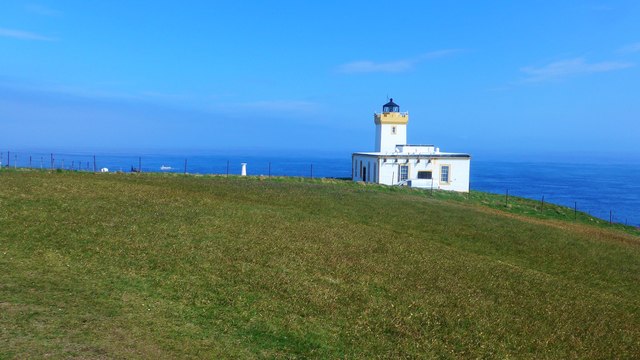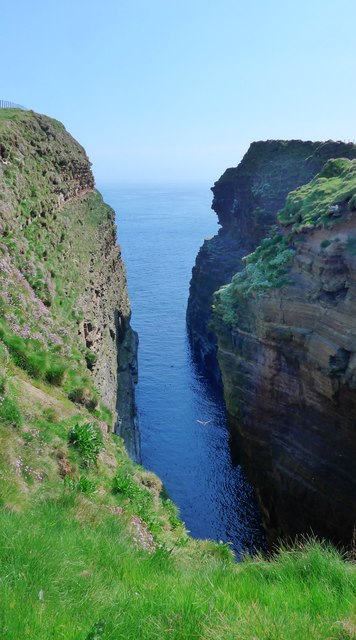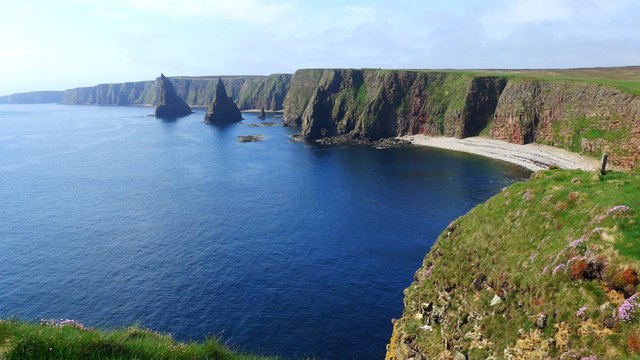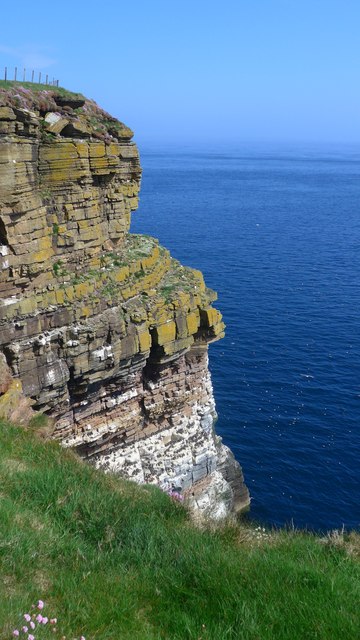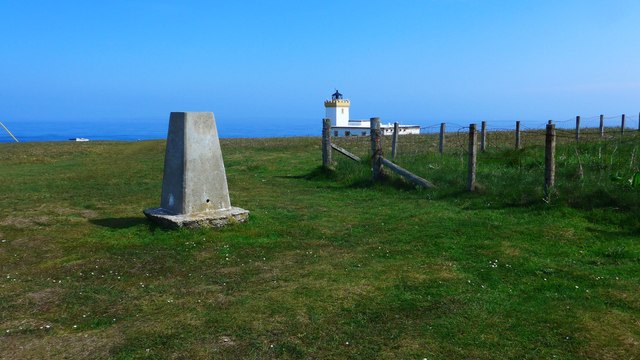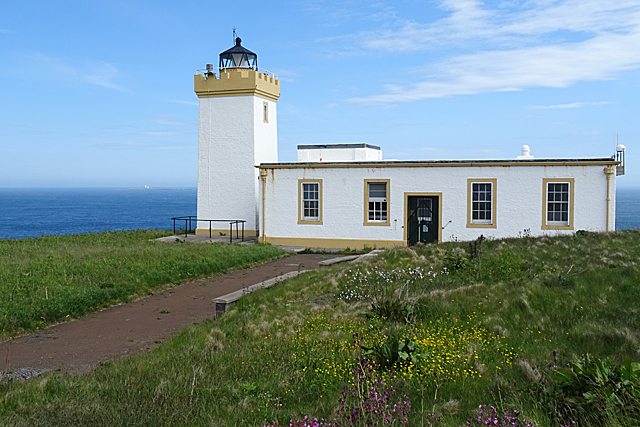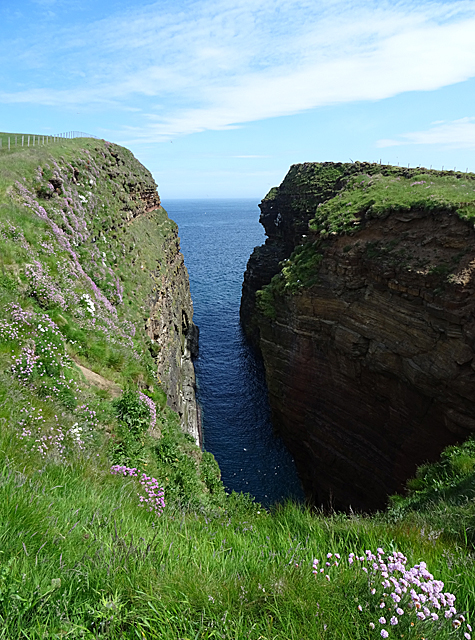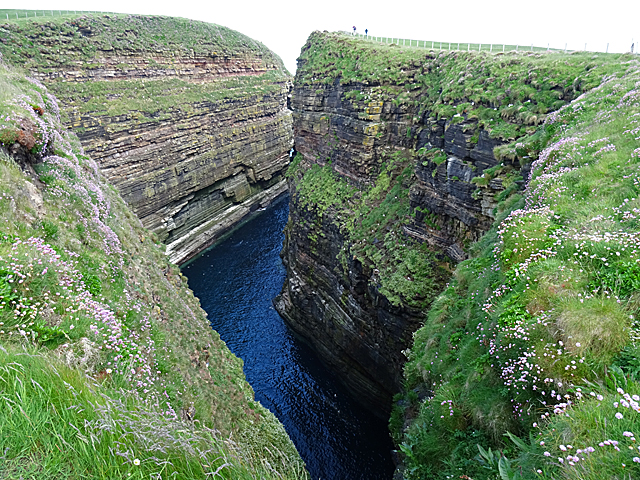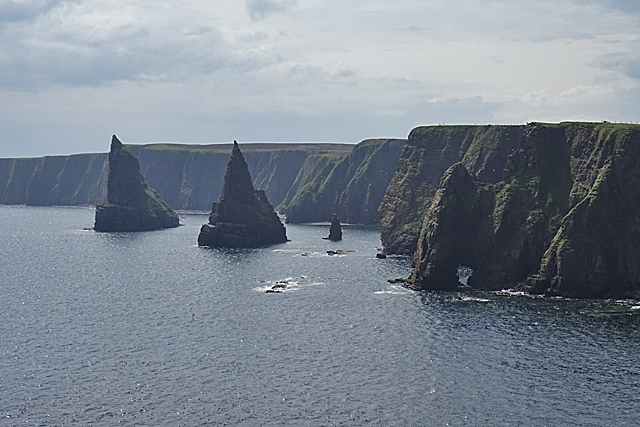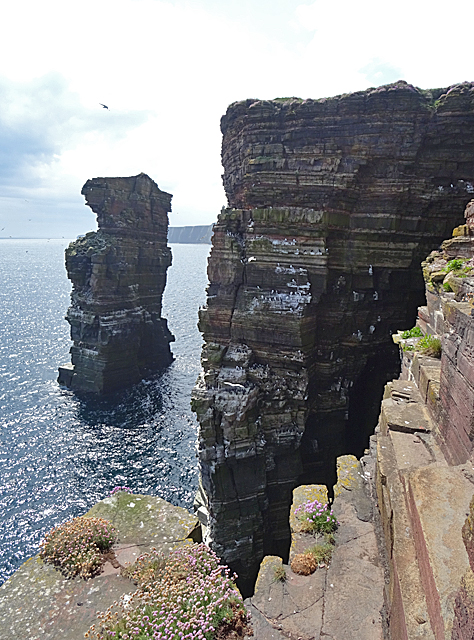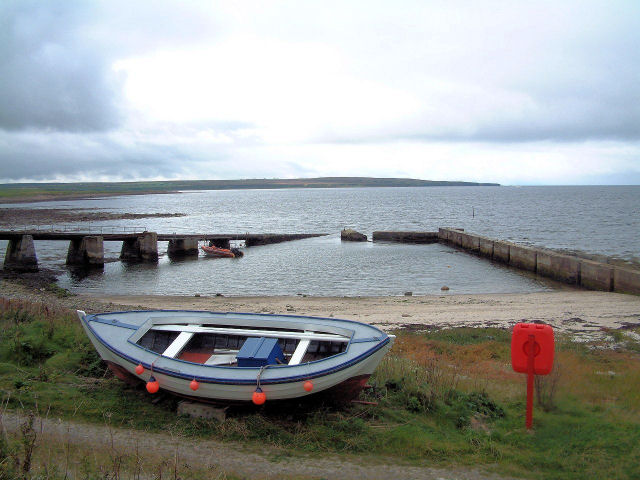The Knee
Island in Caithness
Scotland
The Knee
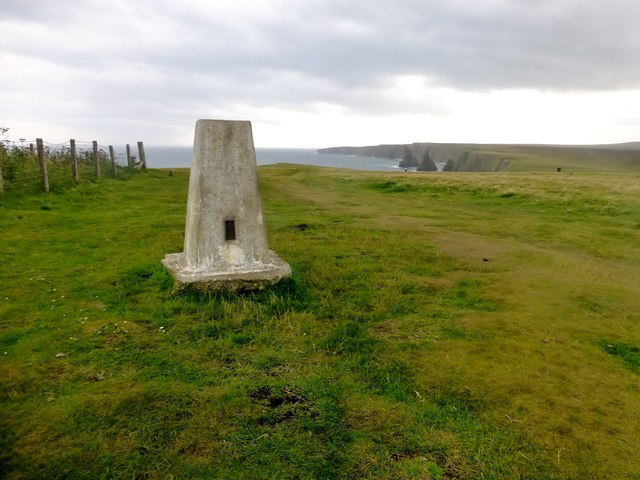
The Knee is a small island located off the northeastern coast of Caithness, Scotland. Situated in the North Sea, it is part of the Pentland Firth archipelago, which also includes neighboring islands such as Stroma and Swona. The Knee is known for its rugged and picturesque landscapes, characterized by steep cliffs, rocky shores, and a diverse range of seabirds.
Covering an area of approximately 2.5 square kilometers, The Knee has a relatively low population, with only a handful of residents. The island is accessible by boat, and there is a small harbor that serves as a landing point for visitors. The Knee offers a tranquil and remote environment, making it an attractive destination for those seeking solitude or nature enthusiasts.
The island's geology is predominantly composed of Old Red Sandstone, which forms the towering cliffs that line its coastline. These cliffs provide nesting sites for various seabirds, including puffins, guillemots, and razorbills. Visitors to The Knee can enjoy birdwatching opportunities and marvel at the impressive colonies that inhabit the island during the breeding season.
Due to its location in the Pentland Firth, The Knee experiences strong tidal currents, making it an important site for marine life. The surrounding waters are home to seals, dolphins, and occasionally whales, providing additional attractions for wildlife enthusiasts.
In summary, The Knee is a captivating and secluded island in Caithness, Scotland, offering stunning landscapes, abundant birdlife, and a unique marine environment. Its unspoiled beauty and tranquility make it an ideal destination for those seeking a peaceful retreat in nature.
If you have any feedback on the listing, please let us know in the comments section below.
The Knee Images
Images are sourced within 2km of 58.639342/-3.0242944 or Grid Reference ND4072. Thanks to Geograph Open Source API. All images are credited.

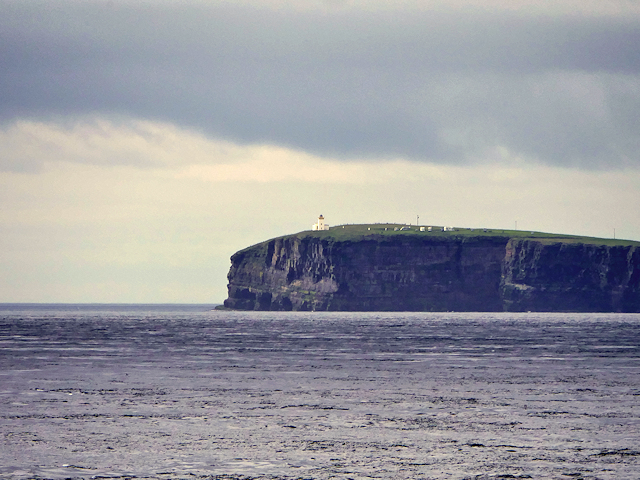
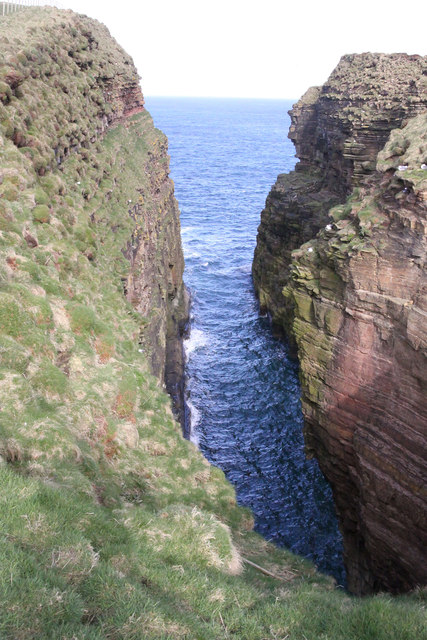
The Knee is located at Grid Ref: ND4072 (Lat: 58.639342, Lng: -3.0242944)
Unitary Authority: Highland
Police Authority: Highlands and Islands
What 3 Words
///depth.herb.call. Near John o' Groats, Highland
Nearby Locations
Related Wikis
Duncansby Head
Duncansby Head (Scottish Gaelic: Ceann Dhunngain or Dùn Gasbaith) is the most northeasterly part of both the Scottish and British mainlands, slightly...
John o' Groats
John O' Groats (Scottish Gaelic: Taigh Iain Ghròt) is a village 2.5 mi (4 km) northeast of Canisbay, Caithness, in the far north of Scotland. John O' Groats...
Huna, Caithness
Huna is a small remote crofting township, located 1 mile northeast of Canisbay and 1.5 miles west of John o' Groats in Caithness, in Scotland. It is currently...
Huna House
Huna House is a Victorian building located in the small village of Huna in Canisbay, north of Caithness. Built in 1870 as the Huna Hotel, it is listed...
Skirza
Skirza or Skirsa, is a small remote linear fishing village, overlooking Freswick Bay to the south and Skirza Head to the southeast, in eastern Caithness...
Canisbay
Canisbay is a rural hamlet located about one mile (1.5 kilometres) southwest of Huna and two and a half miles (four kilometres) southwest of John o' Groats...
MeyGen
MeyGen (full name MeyGen tidal energy project) will be the world's largest tidal energy plant, which is currently in construction. The first phase of the...
Canisbay Parish Church
Canisbay Parish Church is a Church of Scotland church in Canisbay, Scotland, that dates back to the early 1600s and is the most northernly church on mainland...
Nearby Amenities
Located within 500m of 58.639342,-3.0242944Have you been to The Knee?
Leave your review of The Knee below (or comments, questions and feedback).
